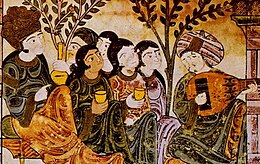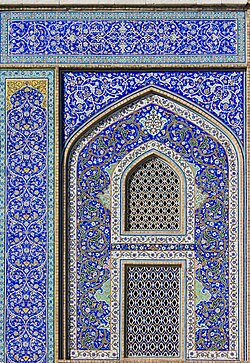Qubba

A qubba (Arabic: قُبَّة) pl. قُبَّات qubbāt), also spelled ḳubba, kubbet and koubba, is a tomb structure, particularly an Islamic domed shrine, in Arabic culture.
It originally was used to mean a tent of hides,[2] but it may also be used generally for tomb sites if they are places of pilgrimage.[3] The word is also used for domes atop the mausoleums or in Islamic medieval architecture.[4] A well-known example is the Dome of the Rock, known in Arabic as "Qubbat al-Sakhrah" (Arabic: قُبَّةُ ٱلْصَّخْرَة, romanized: Qubbat eṣ-Ṣakhrah).
| Part of a series on |
| Arabic culture |
|---|
 |
See also[]
- Shrine
- Maqam (shrine), regional term: wali or weli
- Mazar (mausoleum)
- Islamic pilgrimage
- Türbe, Ottoman mausoleums
- Gonbad
References[]
Citations[]
- ^ Jessup (1881), p. 452.
- ^ Meri (2002), pp. 264–5.
- ^ Meri (2002), pp. 264.
- ^ Petersen (2001), p. 326.
Bibliography[]
- Jessup, Samuel (1881). "The Wady Barada". Picturesque Palestine, Sinai, and Egypt, Division II. New York: D. Appleton & Co. pp. 444–452.
- Meri, Josef F. (2002). "The cult of saints among Muslims and Jews in medieval Syria". Oxford Oriental Monographs. Oxford: Oxford University Press. ISBN 978-0-19-925078-3.
- Diez, E. (2010). "Ḳubba". Encyclopaedia of Islam, 2nd ed.. Leiden: Brill.. (subscription required)
- Petersen, Andrew (2001). A Gazetteer of Buildings in Muslim Palestine (British Academy Monographs in Archaeology). 1. Oxford University Press. ISBN 978-0-19-727011-0.
Categories:
- Islamic architecture

